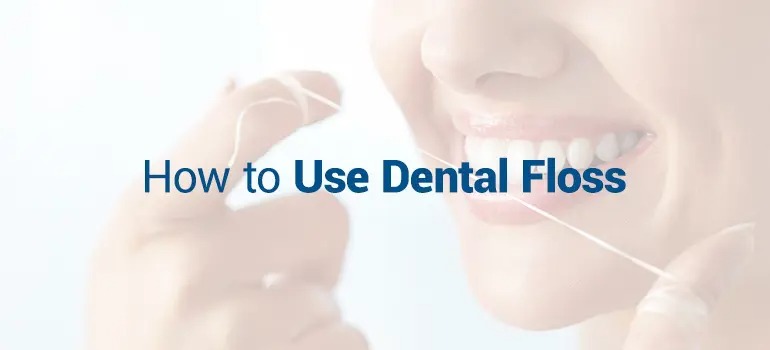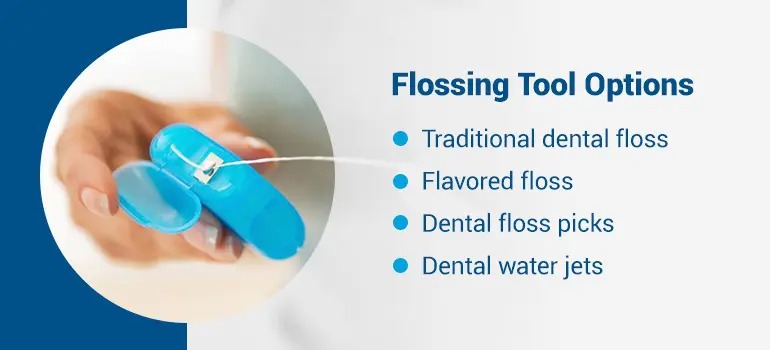
Flossing is vital to maintaining oral health, preventing gum disease, and removing food stuck in teeth, yet less than half of Americans say they floss at least once a day, and 20% say they never floss at all. Even if you’re already flossing regularly, using proper technique will ensure your flossing is effective. Flossing incorrectly can hurt your gums, so it’s crucial to learn the correct form.
To help you protect your oral health, we’ve come up with some simple steps to follow each time you floss. From how to hold floss to how to use dental floss and dental flossers, this article will explain the most effective ways to clean between your teeth and maintain your oral health. Keep reading to find out the value of flossing and how to start practicing flossing the right way.
Floss is an interdental cleaner, which qualifies it as an essential part of taking care of teeth and gums, according to the American Dental Association. Because more than 500 bacterial species live in plaque, including some harmful kinds, plaque buildup can be detrimental to your mouth’s overall health. Unlike a toothbrush, an interdental cleaner like floss reaches the gumline, which is crucial to keeping the spaces between teeth clean and removing plaque that can result in gum disease or cavities.
Though both brushing and flossing are crucial aspects of your dental care routine, flossing is a more effective method for maintaining oral health when done correctly. While brushing removes plaque from only the front and back surfaces of teeth, flossing removes plaque from between the teeth and underneath the gums for a more thorough cleaning. The difficult-to-reach areas that dental floss reaches are where the most harmful bacteria live, which is why flossing regularly can help prevent gum diseases like gingivitis.
Flossing can also help keep your breath fresh and prevent periodontal disease. Periodontal disease is a risk factor in diabetes and cardiovascular disease, so flossing can protect both your overall health and your oral hygiene.

Nowadays, there are many tools available to help you properly clean between your teeth and reap the health benefits of flossing your teeth. Here are some of the most popular flossing tool options.
Proper flossing technique will depend on which method you use and whether you have braces to navigate. We’ve put together a guide on how to floss properly using various flossing methods, along with some tips for flossing with braces, so you can floss successfully, no matter your dental situation.
If you’re using regular dental floss, follow these five simple steps.
Using a handheld flosser like a dental floss pick is similar to traditional floss. After you’ve washed your hands, follow these foureasy steps.
Flossing with braces can be tricky, but it’s not impossible. If you don’t mind adding some extra time to your daily dental routine, you can follow the traditional flossing method while being extra careful to thread the floss through the wires and brackets of your braces. To speed up the process, you could use a floss threader, which will help you safely pull the floss behind the braces wire.
An even easier way to floss with braces is to use a dental water jet, eliminating the chance of getting floss caught in your braces. If you have a dental water jet, all you need to do is fill the machine with water, position the water flosser’s tip between two of your teeth, turn it on, and guide the water stream between each tooth and along your gumline. You can close your mouth to prevent splashing, but make sure you let the excess water drain from your mouth while flossing.

Although regular flossing can help keep your teeth clean and prevent gum disease, routine dental cleanings are still necessary for avid flossers. When it’s time for your dental cleaning, contact AZ Family Dental for quality care at a fair price. At AZ Family Dental, we pride ourselves on providing our patients with excellent care, while treating them like family.
If you’re looking for modern dentistry done right in Glendale, AZ, schedule an appointment with AZ Family Dental today.